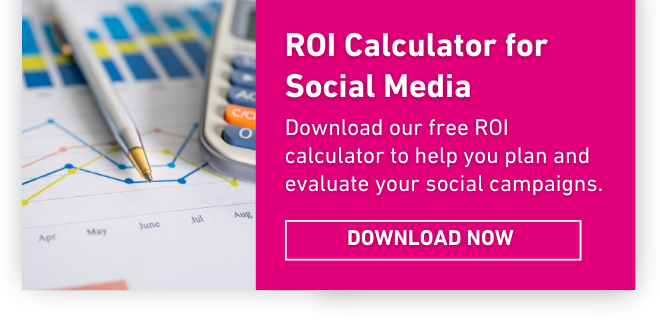If an agency or a social media manager tells you that the ROI of social cannot be measured, there is only one thing to do: run away from them. Here’s how the math can be done.
What’s the ROI of your mother?
Back in 2011, Social Media guru Gary Vaynerchuk was asked by an aggressive CMO “what’s the ROI of social media”. And he ended up replying “what’s the ROI of your mother?”
The meaning was: even though he could not show you graphics and metrics about what his mom did for him, the results were there. Which makes sense, right?
Watch the soundbite from Gary Vaynerhuk's 2011 500inc keynote here.
The problem is, 6 years later, countless social media managers still use that quote out of its context to justify the fact they don’t know how to calculate the ROI of social media campaigns. Maybe in 2011 we had less data and metrics, and it was harder to calculate, maybe. But since then, Gary Vee himself has rectified the context of his quote.
“Because the thing is, figuring out how to calculate ROI on social media is actually pretty straightforward. There is a huge amount of metrics and data available to you when you’re working with social media platforms. Analytics are priority for the top platforms, because they know there is value in what they’re offering.” [Source : garyvaynerchuk.com]
So yes, social media does have a ROI. I’m glad we can put this urban legend out of the way. Now let’s get into how you calculate it.
It’s all about your objectives
It is a given that we can measure many things today in the digital world, but before measuring we need to identify what data we are going to need.
The first question is: what are we trying to achieve with social media? That could be several things:
- Improve customer service and reduce the number of messages handled by phone, reducing our costs and increasing customer satisfaction and retention
- Create an employer brand so we get more high level candidates applying spontaneously, reducing our budgets with recruitment offices
- Generate more leads and send them into our digital sales funnel, reducing other efforts our sales team need to make
- Create more traffic and more sales in our e-commerce
- Increase brand awareness in our target market
- Etc
What do all those objectives have in common? They are all measurable, and they all imply that we either sell more products along the way, or that we reduce some of the existing costs. Many companies jump on the social bandwagon “because everybody else is doing it” without having a clear idea of what they are trying to accomplish. Without knowing that, calculating a ROI is impossible, so make sure you define measurable goals.
What ROI is and is not
"How are we doing on Facebook this month?"
"Great, our likes are going up.”
Another urban legend needs to die here: you don’t measure the ROI of social in likes, shares, comments or number of fans. But since that’s the data that social channels are giving us, a lot of people fall into that trap. Unfortunately, CFO’s aren’t too impressed with this kind of information.
When you talk about ROI, you should always be talking about USD, EUR, SEK or whatever currency is in your wallet these days. An exact definition is: “Return on investment (ROI) measures the gain or loss generated on an investment relative to the amount of money invested. “
Examples:
- We invested $100,000 USD on social media to reduce our recruitment costs, and we saved $150,000 USD in recruitments this year. - > You generated $50,000 USD
Or
- We invested €60,000 EUR on social media which directly allowed for €95,000 EUR in sales. -> You generated €35,000 EUR
In short: how do I calculate the ROI of my campaign?
To summarize, there are 3 key steps to follow so you can calculate the ROI of your campaigns:
- Establish the measurable goal
- Calculate the costs of the campaign (staff, tools, possible specific landing pages, incentives , etc.)
- Compare your results with your costs, so that you get a result expressed in a financial currency or a percentage – nothing else counts.

